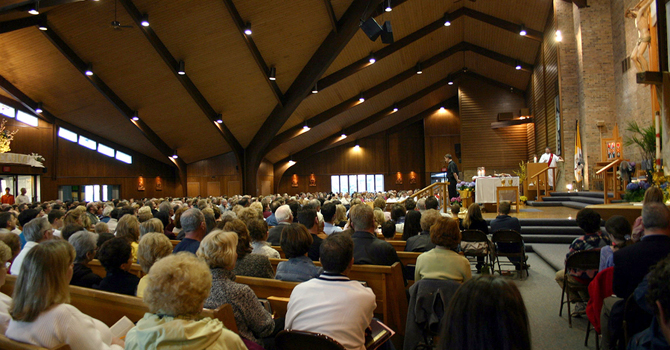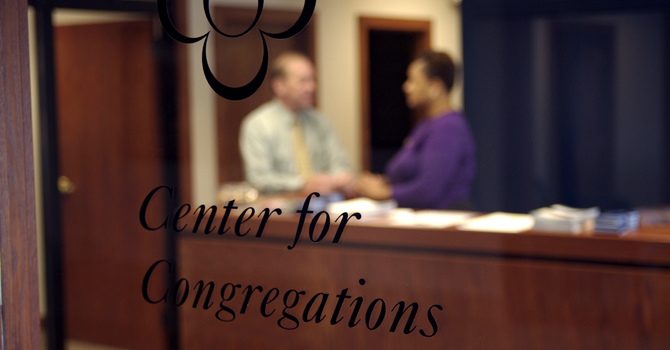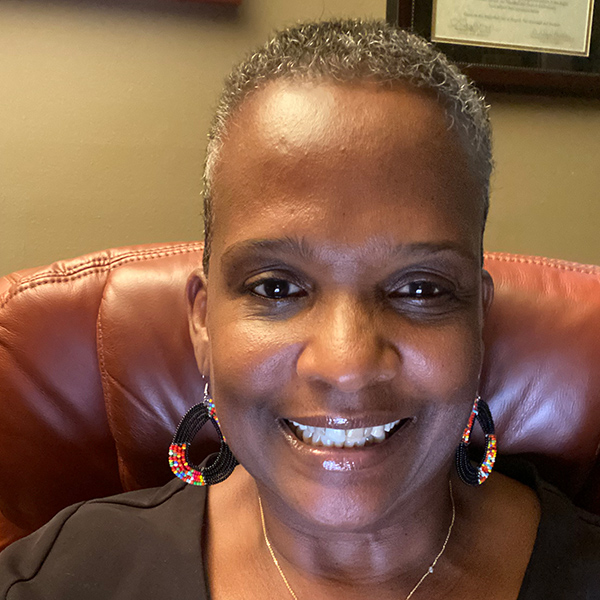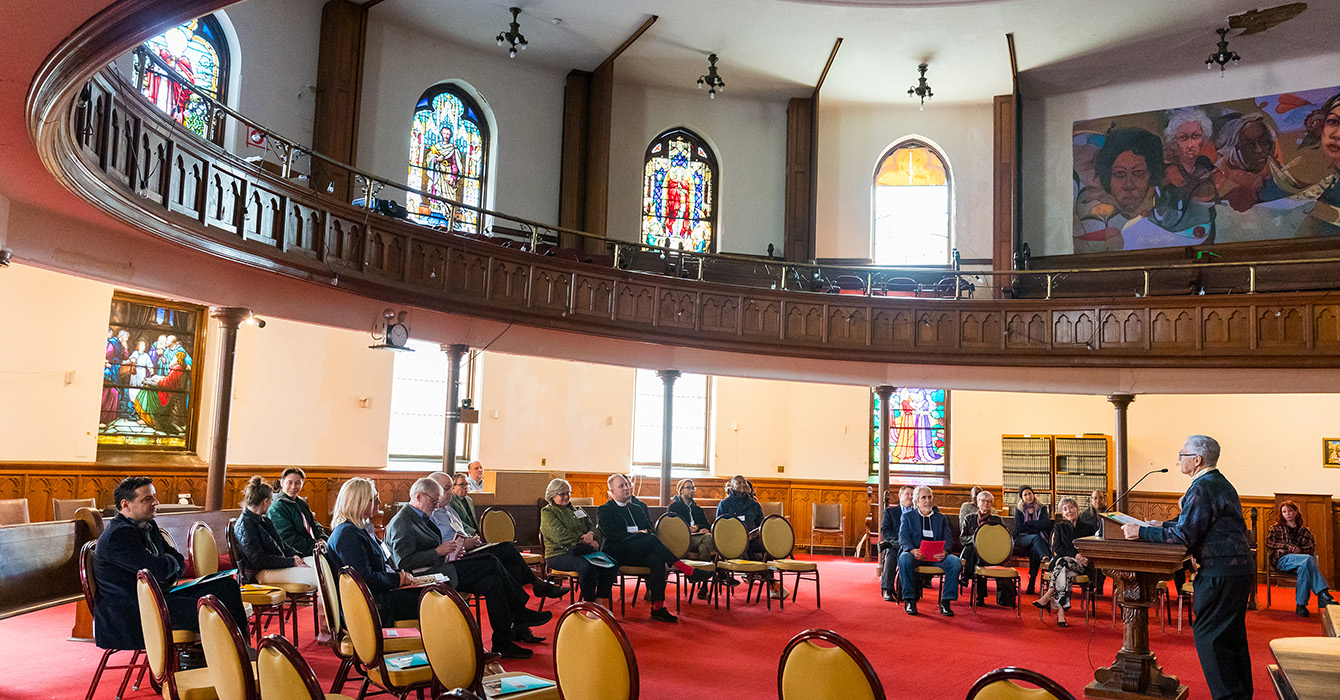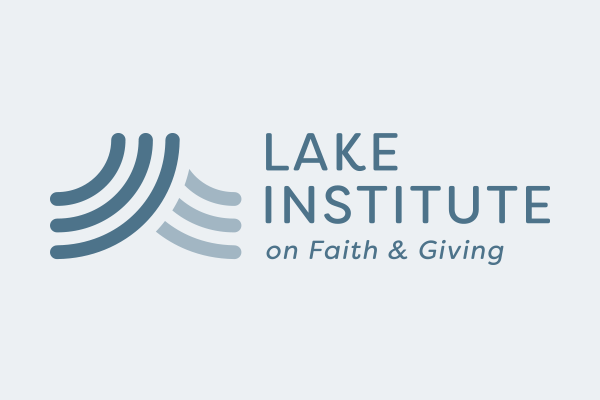To the Rev. Timothy Shapiro, the role of the Center for Congregations in Indianapolis, Ind., isn’t to provide congregations with a list of “best practices” or quick fixes to the challenges they face. Instead, the center’s job is to walk beside congregations, helping them to identify the best resources for their own circumstances.
When those resources are mixed with a congregation’s sense of identity and of what God is calling them to do, the results can be extraordinary, Shapiro said. What matters most isn’t church size, location, worship style or liberal/conservative theology or politics. It’s the capacity to learn -- the ability of clergy and laity to be curious together about the things that matter most to them.
 Shapiro came to the center after 18 years as a Presbyterian pastor with churches in Ohio and Indiana. He has served as a commissioner at the Presbyterian Church (USA) General Assembly and was closely involved with the center’s Sacred Space Initiative. He co-authored the book “Holy Places: Matching Sacred Space with Mission and Message.” Shapiro earned his degrees from Purdue University and Louisville Presbyterian Theological Seminary. The center is affiliated with the Alban Institute and funded by Lilly Endowment Inc.
Shapiro came to the center after 18 years as a Presbyterian pastor with churches in Ohio and Indiana. He has served as a commissioner at the Presbyterian Church (USA) General Assembly and was closely involved with the center’s Sacred Space Initiative. He co-authored the book “Holy Places: Matching Sacred Space with Mission and Message.” Shapiro earned his degrees from Purdue University and Louisville Presbyterian Theological Seminary. The center is affiliated with the Alban Institute and funded by Lilly Endowment Inc.
Shapiro spoke with Faith & Leadership about the center’s work with Indiana congregations. The following is an edited transcript.
Q: The center describes the heart of its work as “resourcing congregations.” What does that phrase mean?
The center works on the hypothesis that when a congregation seeks to learn something new or gain greater capacity, it’s to their advantage to receive some outside help. That help becomes even more beneficial when it’s mixed with a congregation’s own creativity, their own inner wisdom, and their own sense of what God is calling them to do. So when we talk about resourcing congregations, we mean the dynamic of helping congregations try to find and use the best resources. That might be a book, a training session, a workshop, a consultant, a coach, a seminary professor, a website or another congregation. It’s a dynamic between us helping them find the best resources, which then mixes with their own sense of who they are and what they want to learn and what God is calling them to do.
Q: It almost sounds obvious that people facing challenges would need resources, but I gather that may be easier said than done.
There are so many resources available to congregations. There’s a world of help, an abundance of help out there. And so, in terms of the center’s development, there was a sense that if someone walked alongside congregations, helping to make sense of all the resources out there, that might be beneficial.
Q: The center is known for its successful resourcing model. How does that work?
Our model has always been based on what we learn from congregations. But at the heart of it is the idea that, given just the right amount of help, congregations are very capable of addressing the challenges they face. We provide the opportunity for a kind of self-directed adult learning within a particular kind of organization: a congregation.
In working with a congregation, we try to avoid giving them too much of what’s not needed, or too little of what’s wanted. So rather than a purely systems-driven or organizational development approach, we’re after a learning, developmental approach where we encourage congregations to take the initiative and maybe even claim their own challenges and opportunities. The center takes a nonexpert stance; we aren’t starting initiatives that we think congregations should be interested in.
We work with congregations over almost every conceivable issue, but we’re not the experts on any of them. We function more like a family physician than a medical specialist.
Part of our method in encouraging self-directed learning is making sure that clergy and laity are learning together. Clergy have very specialized knowledge, and that’s only enhanced when they’re learning and working with gifted congregants around issues that matter to them.
Q: You have written that any congregation can overcome its challenges, even those that show various indicators of decline. Could you speak more about this?
Because the center works within a specific geographic region, Indiana, we are privileged to work with all kinds of congregations and are able to observe what happens within that region that might or might not be consistent with the literature about congregational life in general.
In the congregations we work with, we’ve found exceptions to every rule. We have found congregations that are positive exceptions to the literature about the decline of mainline congregations or the challenges of rural congregations or things that small churches can’t do. And consistently, the factors that led to these exceptions are things like leadership. These congregations have clergy and laity who spend a lot of time discerning what it is they want to address and not waiting for a denominational initiative or a sociological report that tells them what they should address. These are clergy and laity who are skilled at exegeting their own context and making their own decisions based on what they sense God is calling them to do. And then, these congregations are very resource savvy. They don’t quickly accept what others might say is a best practice. They tend to gravitate positively toward what’s a best fit for them.
Q: So, there is no best practice that’s going to fit across all congregations.
Right. There are any number of practices. It’s really an issue of what’s the best fit when it comes to a resource or a congregation.
For example, the center gets called frequently about strategic planning. There’s any number of approaches to strategic planning that in the right setting would be beneficial to any particular congregation. But it’s the insight and savvy of the congregation, with -- I like to think -- the help of the center, that can best discern which resources are the best fit.
So, an “appreciative inquiry” approach that might be great for one congregation might not work for another. Part of what we do is try to walk alongside congregations as they discern which is the best resource for them.
Q: You’ve written that when it comes to overcoming challenges, such factors as church size, location, worship style, or liberal/conservative theology or politics don’t matter. What matters is its capacity to learn.
That’s right. The capacity the congregation has to be curious together -- clergy and laity -- about the things that matter most to them is at least as much a predictor of outcome as other sociological categories or organizational diagnoses one might bring to congregations.
Q: What other kinds of organizations might benefit from the center’s approach?
Our resourcing model isn’t for everyone, for a variety of reasons. But generally, it’s an approach that many judicatories could do, and are doing, and other organizations that support and strengthen congregations.
Organizations interested in a resource model might want to think about what model they already use. There are a variety of approaches. There’s a direct consultation model; there’s also teaching and telling. Our colleagues at the Alban Institute helped us think through different modes of intervention with congregations. But any group that works with congregations already and is interested in encouraging congregations to figure out their own commitments and who are OK with things moving slowly and interested in a developmental approach to learning might find this model engaging.
Q: I understand the center is working with several seminaries and other organizations, helping them to begin using this resourcing model. What are you learning from them?
One thing we’re hearing is that several of them are already resourcing; they just haven’t called it that. They get calls from congregations about any number of subjects; they aren’t necessarily the experts or the direct resource provider. But they’re in a position to help congregations figure out what is the best help available. They are discovering that, “Hey, we already do this! We already help congregations with their learning.” Organizations are already resourcing congregations in effective and positive ways.
Q: What are the challenges or issues in adapting or scaling up this approach for use in other areas or types of organizations?
One thing is that the center is designed to serve constituents in a defined geographic area. Does this approach change if it’s a denominational relationship? The self-directed educational model allows congregations to take time and figure out complex issues. Paradoxically, because we don’t have an ecclesiastical stake in the results, the center can be both more relaxed and, in some ways, more helpful.
Because we’re geographically defined, we’ve worked with some congregations for 12 or 13 years. They can start working on something and we might not hear back from them for a year; then they call again when they’re ready to move ahead. We’ve lost absolutely nothing. We had nothing at stake in them rushing to a premature answer.
A local judicatory, however, might not be comfortable with a congregation not calling them back for a year. They might need an answer for mission funding or clergy placement, or whatever the issue, to fall into place quickly.
On the other hand, judicatories or denominations have been resourcing congregations much longer than we have. They could be the most natural of all places for honing the resourcing idea.
Q: I assume denominations have always performed that function to some extent. What opportunities do you see for denominations to expand their role in this area?
Historically, denominations have been primary resource providers around subjects like worship, stewardship and practical theology in preaching or Christian education. Many of the resources we recommend to congregations are from their own tradition and their own community of faith.
Around any number of issues, we have found that the best resource is often local and highly contextual. For instance -- when a congregation is looking for an architect to redesign their youth room because they have more elementary school kids than they did two years ago and their youth space was designed primarily for teenagers -- it’s hard for a national denominational office to know who might be the best architect in a town of 20,000.
Q: What kinds of help do congregations find useful?
The top issues we’re called about are related to technology, strategic planning, buildings, leadership development, volunteers and spirituality. It could be anything from small group prayer to faith formation along the lines of catechism or confirmation or youth ministry. Over the last several years, those top five or six areas have remained fairly steady.
Q: It’s actually a pretty encouraging list isn’t it? I’m not hearing calls about conflict on the list.
Yeah. I don’t know the answer to this, but it would be interesting to know if a methodology that invites congregations to energize their own creative assets to address a challenge attracts more positive issues or issues with greater potential for positive results.
Q: Do you think that, for many congregations today, the key challenges are, at a deeper level, issues of identity? That is, that they perhaps don’t have a clear sense of who they are?
That could very well be possible, and the center has tried to address the identity issue in a couple of ways. Let’s say a congregation wants to learn about planning or about youth ministry; they’re defining their challenge and opportunity. They’re talking to someone who isn’t going to have an answer but is willing to ask lots of questions and listen. In the course of that conversation, congregations often find themselves speaking their identity. In the act of listening and in being listened to, they become more articulate about who they are and who God is calling them to be.
Slowing down also encourages identity reflection; we’re not going to rush a congregation into finding the right resource in that space between when they call us and when they find out what they want to engage. We’re encouraging them to figure out who they are and what they want to do.
That’s also why we avoid the best practice thing, because by not rushing in to say “Here’s the five keys to whatever,” the congregation has to figure out what is best for them. One of our staff members uses a Montessori illustration. The teacher in a Montessori school is the host and sets the shelves, if you will, for the learning experience. The student walks in and gets to explore the items on the shelves in their own time and figure out what they want to interact with in order to develop. We offer the same kind of opportunity for congregations.
The times when I have been most fed by a congregation, and the times in my life when I feel I’ve been most useful to a congregation either as a worshipper or a clergy leader or a member, have been when the congregation has been clear about who it is and where it’s going, and finds great delight in learning how to get there.
Q: Is there anything else you’d like to say about the center’s work?
One of the primary reasons the center exists is that we are absolutely convinced that congregations are essential for the religious experience of individuals. They are invaluable when it comes to helping people figure out and live their religious claims and commitments. We want to support congregations because congregations are so essential to people and their religious identities. Well-functioning congregations add a tremendous amount to the well-being of a local community.
Second, regarding our methodology, when we talk about the best fit for any particular resource, that notion of fit is not just contextual but also developmental. At certain times in a congregation’s life, certain kinds of resources will make more sense developmentally, based on their readiness and capacity.
The first time a congregation calls, we might offer them a web article or a book. But what often happens is that the congregation then develops to the point where they’re no longer satisfied with just reading an article and that they’re now ready to participate in, for example, an 18-month learning experience with other congregations. So we look at resourcing not just contextually, but also in terms of their present capacity and their developmental trajectory.

